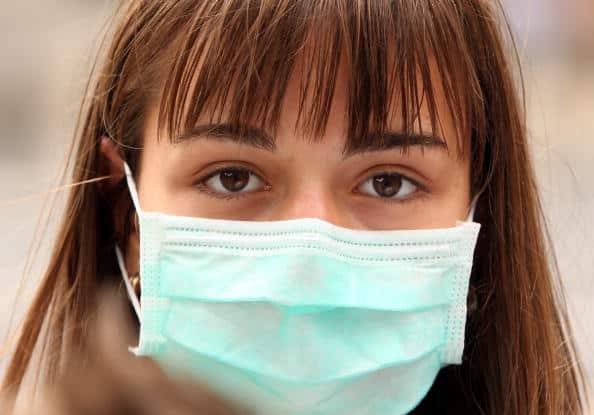Are single-use masks saving lives or destroying the environment?
Have you ever thought about where your disposable face masks go when you throw them away? Since the beginning of the recent global pandemic, COVID-19 in 2020, the manufacturing and distribution of masks have increased dramatically, to meet the extremely high demands of face masks. But according to OceansAsia, a non-profit marine conservation organization, more than 1.5 billion disposable masks have entered the ocean since 2020, which means an additional 4,680 6,420 metric tons of marine pollution.
Masks have long been a solution to preventing the spread of diseases, from the beak-like masks that doctors wore during the Black Death to now the commonly worn disposable masks that nearly every household owns. However, despite the fact that single-use masks do offer critical protection, there are many drawbacks.
Firstly, most surgical masks are made of non-woven fabrics made from plastics such as polypropylene. Polypropylene is not biodegradable. This means that the accumulating amount of face masks will not disappear and will continue to contribute to the enormous amounts of plastic pollution. They also release several toxic substances during the process of breaking down. “Even when plastic breaks up into smaller pieces, it can take as long as 450 years to decompose,” says Teale Phelps Bondaroff, director of research at OceansAsia.
The huge amounts of masks produced in recent years is also another cause of the problem. Before the pandemic, masks were less common and the environmental influences that were caused by the masks were insignificant compared to major issues at the time which were plastic bags. The pollution from face masks was almost invisible and unseen. According to a 2020 study published in Environmental Science and Technology, “The pandemic triggered an estimated global use of 129 billion face masks and 65 billion gloves every month.” This sudden and huge increase in numbercaused masks to suddenly become problematic because not all of them are disposed of properly. When they end up being thrown away in the rubbish bins or just littered carelessly onto the ground, 80% of marine pollution originates from land which includes masks. Statistics from a study in Environmental Advances show that a single face mask can release as many as 173,000 microfibres per day into the seas.
When plastic waste enters the ocean, they pollute the environment and destroy biodiversity. Biodiversity is important because in order for species to coexist and survive, there has to be a variety of animals and ecosystems. Many scientific studies state that it is almost certain that by 2050 there will be more plastic than fish in the ocean. This indicates that thousands of sea animals will lose their homes and die from plastic pollution. On average 100,000 marine animals die from getting entangled in plastic yearly. Because of the nature of food chains, plastic is passed on from one species to another. It may surprise you, but since humans are at the top of the food chain, we might actually be consuming plastic (from the mask that you discarded years ago) from the fish we eat!
The final problem is that while most of us and our communities live in a first world country and we are lucky and privileged to be able to afford single-use masks easily, other low-income families who are less fortunate cannot have access to them. 10 disposable masks from The Warehouse costs around $4, which is very expensive for people with not enough income to even buy their food. At my school, St Cuthbert’s, there are boxes and boxes of single-use masks, which can be accessed and provided for events such as parent-teacher conferences. On top of wasting them, they’re leaving the shelves empty at local supermarkets such as Countdown and Pack’nSave for families already struggling to afford any health care. So in actual fact, there are masks overflowing and being discarded with no bother in some places and in other situations they’re seen as a luxury that many cannot afford. As we are in the middle of 2022, with the increasing spread of Omicron, the prices of masks skyrocketed even more. This also links to Goal 1: No Poverty of the 17 Sustainable Development Goals.
So then what is a good solution to the problem of single-use face masks?
Goal 12 of the SDGs also states that we need to be responsible for consumption and production, therefore encouraging us to reduce the amount of single-use masks. Unfortunately, disposable masks will likely still be required for professions such as doctors, but reusable masks are a great alternative for us. This will also benefit smaller businesses that sell reusable face masks. In the current situation people tend to prefer single-use masks, because they seem to be more “hygienic” and sometimes even appear more “aesthetic”, which is not necessarily true, since reusable masks are proven to be just as effective. In reality some of the less well-known businesses that make reusable masks are actually very considerate of the environment, an example being the NZ brand LUCKE which offers reusable masks for just $25, also made from recycled plastic and waterproof. They are also often made with synthetic materials, which has a lower environmental impact than the production of single-use masks.
In conclusion, single-use masks are multiplying and destroying the environment while we live through this global pandemic. We need to think ahead into the future and consider alternate solutions, otherwise we will find ourselves surrounded by plastic waste everywhere when we walk out of the Covid-19 situation. Inform your family and friends, start taking action and together we can reduce single-use masks to give the already broken earth a chance to heal.













gak gak